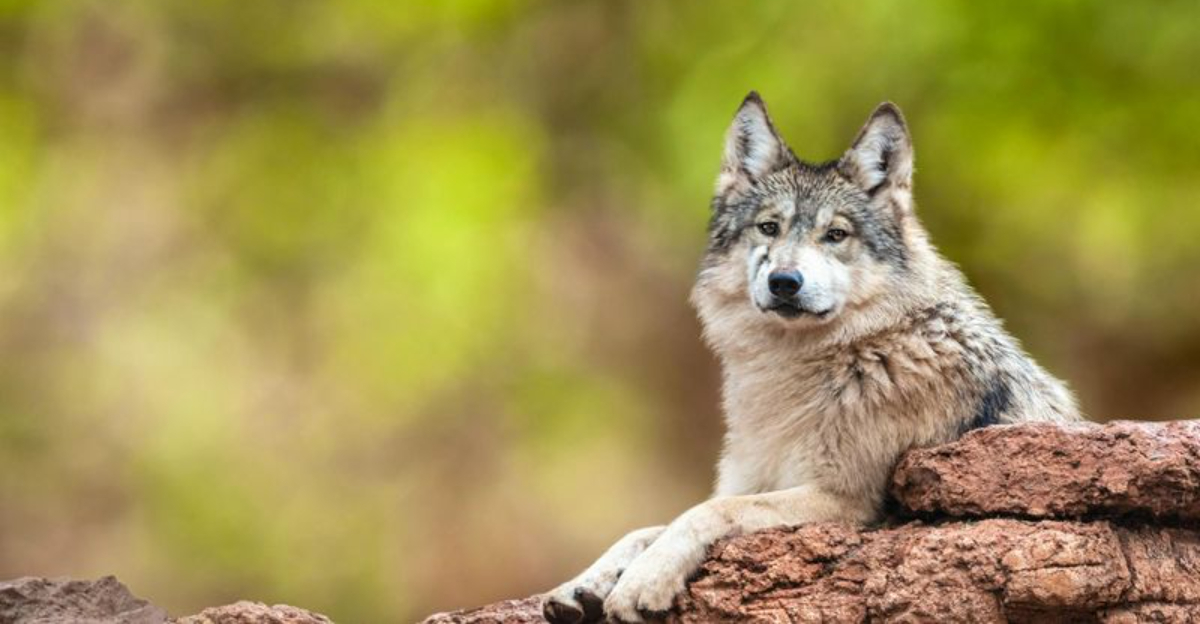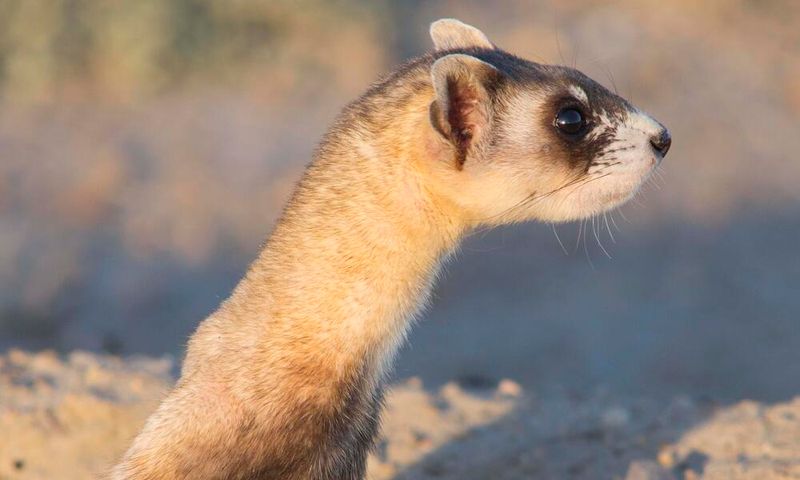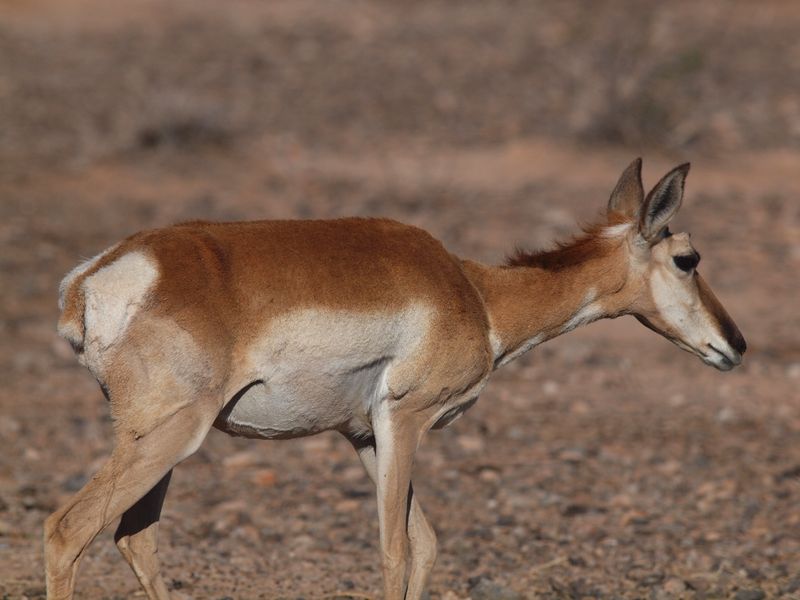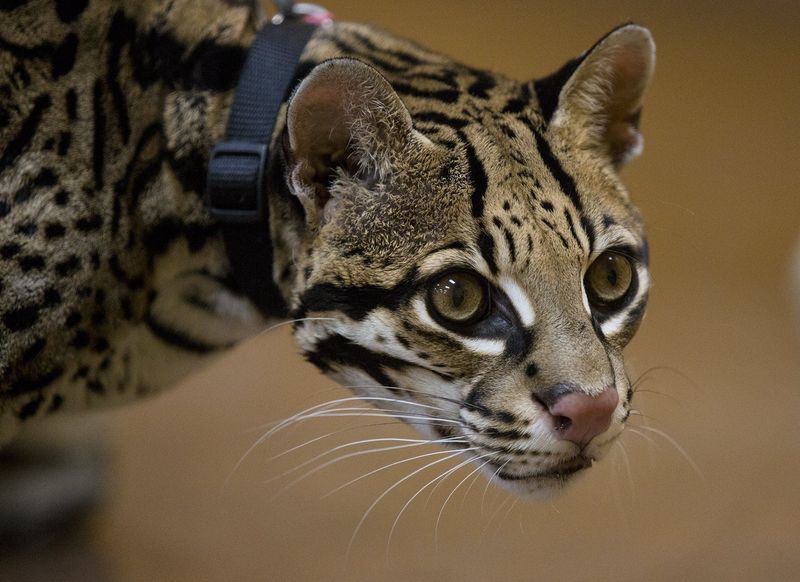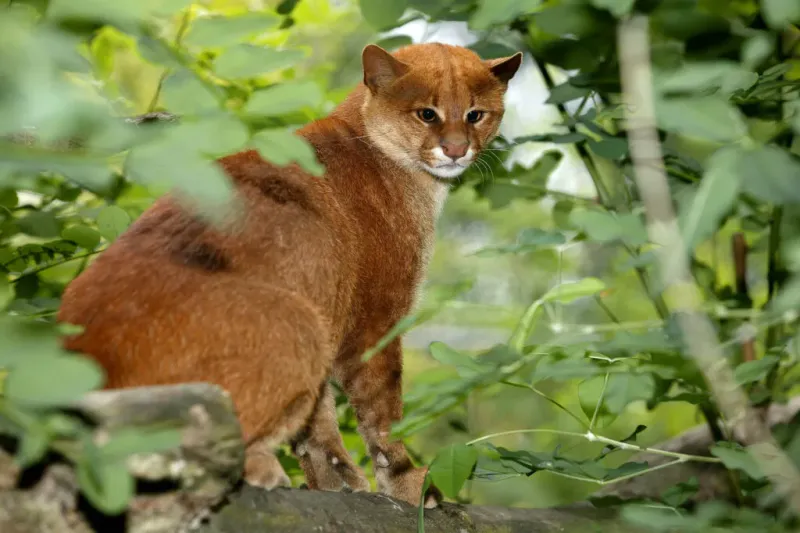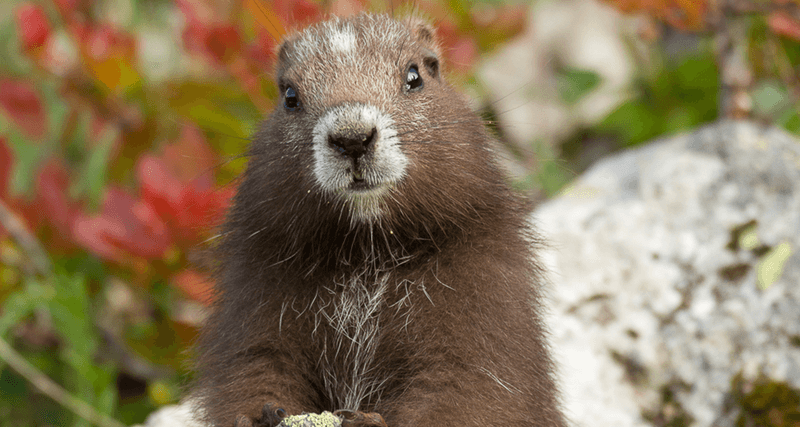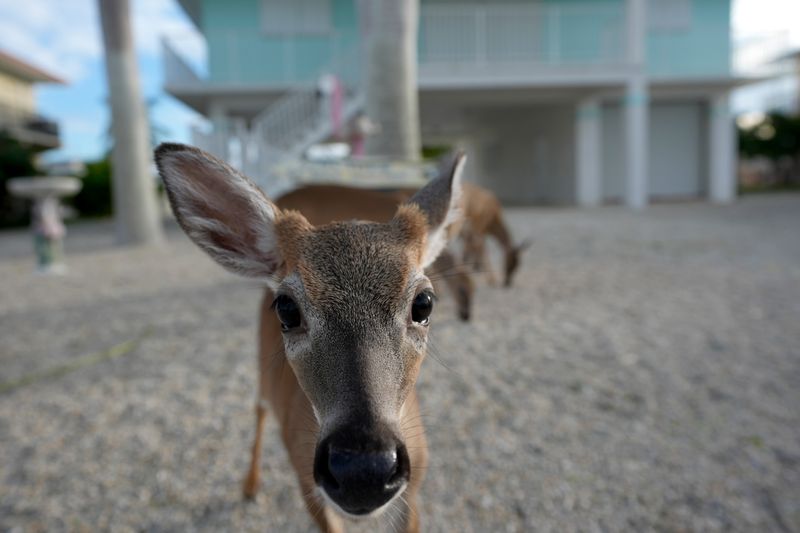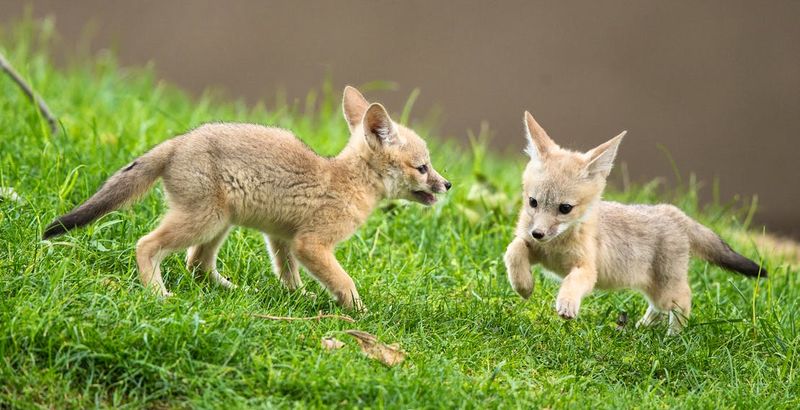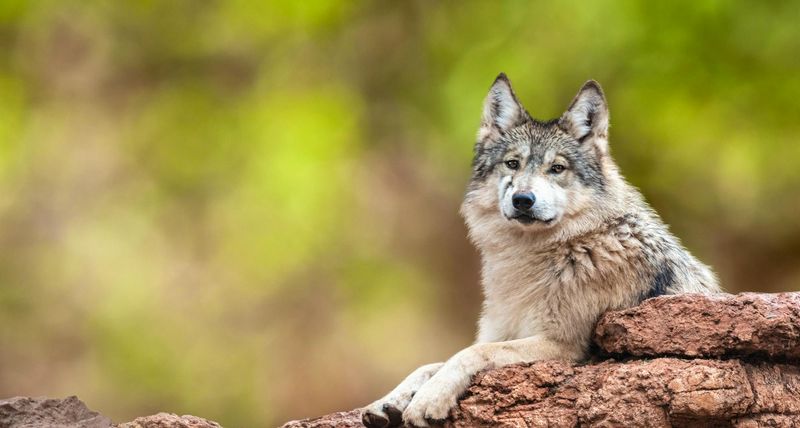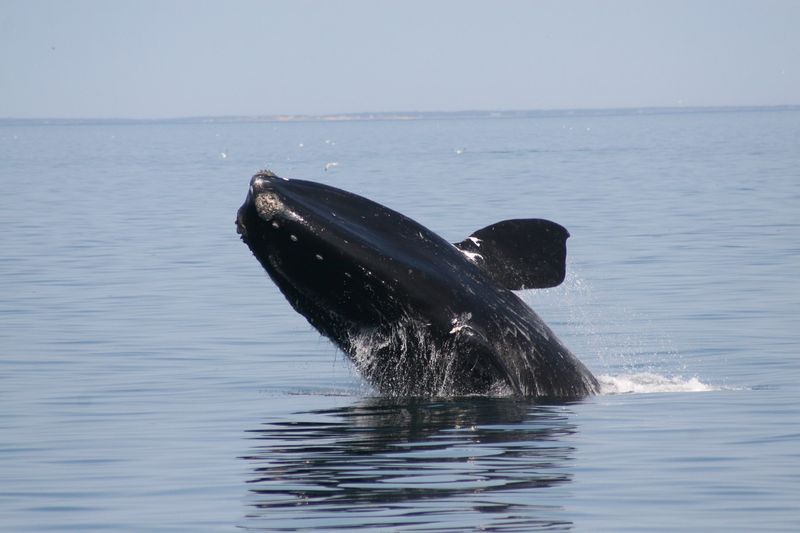📖 Table of Content:
North America’s wilderness is home to some incredible mammals that are fighting for survival. These rare creatures face threats from habitat loss, climate change, and human activities that push them closer to extinction every year. Learning about these endangered animals helps us understand why conservation efforts are so important. Each of these mammals plays a vital role in their ecosystem, and losing them would change our natural world forever.
1. Black-footed Ferret
Once declared extinct in the wild, black-footed ferrets have made a remarkable comeback through captive breeding programs. These slender, masked hunters specialize in hunting prairie dogs, which make up about 90% of their diet.
Black-footed ferrets face multiple threats, including disease (particularly sylvatic plague), habitat loss, and the decline of prairie dog colonies. Only about 300 remain in the wild today.
These nocturnal predators are North America’s only native ferret species. They spend most of their lives underground in prairie dog burrows, emerging at night to hunt. Conservation efforts continue in Wyoming, South Dakota, and Arizona, where small populations have been reestablished.
2. Sonoran Pronghorn
Racing across the desert at speeds up to 60 mph, Sonoran pronghorns are among the fastest land mammals in North America. Their population plummeted to just 21 animals in 2002 after a severe drought hit their arid habitat.
These tan-colored ungulates with distinctive white patches and black facial markings have adapted to survive in one of the harshest environments on the continent. Found only in small pockets of Arizona and Mexico, they face threats from border wall construction, military activities, and climate change.
Unlike true antelopes, pronghorns are unique to North America. Their enormous eyes provide nearly 360-degree vision to spot predators across the open desert. Today, conservation efforts have helped increase their numbers to around 200 individuals.
3. Ocelot
Fewer than 50 ocelots remain in the United States, all confined to a small area in southern Texas. These medium-sized wild cats with distinctive spotted coats once ranged throughout the southwestern states but have been pushed to the brink by habitat fragmentation and vehicle collisions.
Ocelots are twice the size of house cats but smaller than bobcats. Their beautiful golden-yellow fur adorned with black spots and rosettes has historically made them targets for the fur trade. They hunt primarily at night, using their exceptional vision to stalk birds, snakes, and small mammals.
Road mortality remains their biggest threat in the U.S. Conservation efforts focus on habitat protection and wildlife crossings to help these elusive cats move safely across their remaining territory.
4. Jaguarundi
The jaguarundi remains one of North America’s most mysterious cats. With fewer than 50 confirmed sightings in the United States over the past century, these unusual felines maintain a ghostlike presence along the U.S.-Mexico border.
Unlike their spotted relatives, jaguarundis have solid-colored coats in either dark gray or rusty red. Their elongated bodies, short legs, and small, rounded ears give them an otter-like appearance. They prefer dense brush and riparian areas where they hunt during daylight hours – unusual behavior for wild cats.
Habitat loss along the Rio Grande Valley has devastated their population. Conservation plans include potential reintroduction programs in Texas, though confirmed U.S. sightings remain extremely rare. Most North Americans have never heard of this elusive cat.
5. Vancouver Island Marmot
Canada’s most endangered mammal lives exclusively on Vancouver Island. These chocolate-brown marmots with white patches on their nose and chest have seen their population drop to fewer than 30 individuals in 2003, making them one of the rarest mammals in the world.
Vancouver Island marmots hibernate for seven months each year in underground burrows. During their brief active season, they live in small colonies in subalpine meadows, communicating through distinctive whistles that earned them the nickname “whistle pigs.”
Logging practices altered their habitat, while introduced predators like wolves and cougars have devastated their numbers. Captive breeding efforts have helped increase their population to about 200 today, though they remain critically endangered and vulnerable to climate change impacts.
6. Key Deer
Standing just 28 inches tall at the shoulder, Key deer are the smallest subspecies of white-tailed deer in North America. These miniature deer live exclusively in the Florida Keys, primarily on Big Pine Key and a few surrounding islands, with a total population of around 800 individuals.
Habitat loss, vehicle collisions, and rising sea levels threaten their existence. Their small size evolved due to island isolation – a classic example of insular dwarfism. Key deer can swim between islands and have adapted to drink slightly salty water.
Hurricane Irma in 2017 damaged much of their remaining habitat. Despite being protected under the Endangered Species Act since 1967, these diminutive deer face an uncertain future as climate change continues to impact their low-lying island home.
7. San Joaquin Kit Fox
With oversized ears and tiny bodies weighing just 5 pounds, San Joaquin kit foxes look like characters from a fairy tale. These nocturnal hunters once thrived throughout California’s Central Valley, but agricultural development has claimed over 95% of their native habitat.
Their large ears serve as natural air conditioners in the hot valley climate. Kit foxes dig elaborate underground dens with multiple entrances to escape predators and extreme temperatures. They primarily hunt kangaroo rats and other small mammals under the cover of darkness.
Fewer than 7,000 remain today, threatened by habitat loss, pesticides, and competition from larger predators like coyotes. Urban development continues to fragment their remaining territory, though some populations have adapted to live in golf courses and even urban areas of Bakersfield.
8. Mexican Gray Wolf
The howl of the Mexican gray wolf nearly vanished forever when their population dwindled to just seven individuals in the 1970s. All Mexican wolves alive today descend from this small founding population, making them the most endangered wolf subspecies in the world.
Smaller than their northern cousins, Mexican wolves typically weigh between 50-80 pounds with distinctive gray-brown coats tinged with rust around their ears and legs. They once ranged throughout the southwestern U.S. and Mexico before being systematically eliminated through government-sponsored eradication programs.
Reintroduction efforts began in 1998 in Arizona and New Mexico. Today, about 200 Mexican wolves roam the wild, though they face continued challenges from illegal shooting, genetic bottlenecks, and conflicts with livestock operations that limit their recovery.
9. North Atlantic Right Whale
The North Atlantic right whale earned its name from whalers who considered it the “right” whale to hunt – a practice that nearly caused their extinction. Today, fewer than 350 individuals remain, making them one of the world’s most endangered large mammals.
These massive creatures grow up to 52 feet long and weigh up to 70 tons. Distinguishable by the white callosities on their heads and lack of a dorsal fin, they migrate along the eastern seaboard of North America from calving grounds off Florida to feeding areas in the Gulf of Maine and Bay of Fundy.
Ship strikes and fishing gear entanglement cause most right whale deaths today. Scientists warn they could become functionally extinct within 20 years without immediate conservation action. Each lost female represents a significant blow to their recovery potential.
